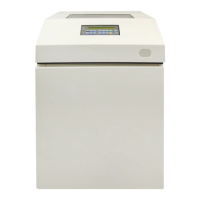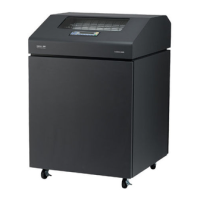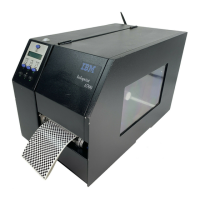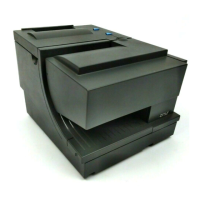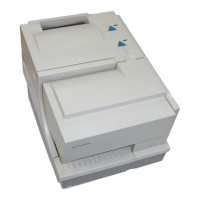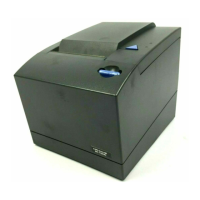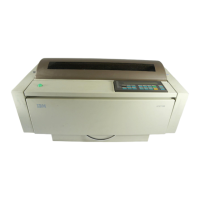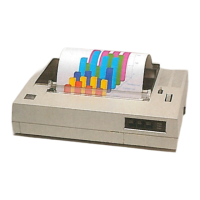Glossary
font, graphics, image, and formatted data objects.
(2) Something that a user works with to perform a
task.
object area. A rectangular area in a presentation
space into which a data object is mapped. The
presentation space can be for a page or an overlay.
Examples are a graphics object area, an image object
area, and a bar code object area. Formerly called
block.
OCR-A. See Optical Character Recognition-A.
OCR-B. See Optical Character Recognition-B.
offline. A device state in which the device is not
under the direct control of a host. Contrast with
online.
offset. A table heading for architecture syntax. The
entries under this heading indicate the numeric
displacement into a construct. The offset is measured
in bytes and starts with byte zero. Individual bits can
be expressed as displacements within bytes.
online. A device state in which the device is under
the direct control of a host. Contrast with offline.
Optical Character Recognition-A (OCR-A). A font
containing the character set in ANSI standard
X3.17-1981, that contains characters that are both
human-readable and machine-readable.
Optical Character Recognition-B (OCR-B). A font
containing the character set in ANSI standard
X3.49-1975, that contains characters that are both
human-readable and machine-readable.
order. (1) In GOCA, a graphics construct that the
controlling environment builds to instruct a drawing
processor about what to draw and how to draw it.
The order can specify, for example, that a graphics
primitive be drawn, a change to drawing attributes or
drawing controls be effected, or a segment be called.
One or more graphics primitives can be used to draw
a picture. Orders can be included in a structured
field. Synonymous with drawing order. (2) In the
IPDS architecture, a construct within an execute-order
command. (3) In IOCA, a functional operation that is
performed on the image content.
ordered page. In the IPDS architecture, a logical
page that does not contain any page segments or
overlays, and in which all text data and all image,
graphics, and bar code objects are ordered. The
order of the data objects is such that physical pel
locations on the physical medium are accessed by the
printer in a sequential left-to-right and top-to-bottom
manner, where these directions are relative to the top
edge of the physical medium. Once a physical pel
location has been accessed by the printer, the page
data does not require the printer to access that same
physical pel location again.
orientation. The angular distance a presentation
space or object area is rotated in a specified
coordinate system, expressed in degrees and
minutes. For example, the orientation of printing on a
physical medium, relative to the X
m
axis of the X
m
,Y
m
coordinate system. See also presentation space
orientation and text orientation.
origin. The point in a coordinate system where the
axes intersect. Examples of origins are the
addressable position in an X
m
,Y
m
coordinate system
where both coordinate values are zero and the
character reference point in a character coordinate
system.
overlay. (1) A resource object that can contain text,
image, graphics, and bar code data. Overlays define
their own environment and are often used as
electronic forms. (2) The final representation of such
an object on a physical medium. Contrast with page
segment.
overlay command set. In the IPDS architecture, a
collection of commands used to load, deactivate, and
include overlays.
overlay ID. A one-byte ID assigned by a host to an
overlay. Overlay IDs are used in IPDS Begin Overlay,
Deactivate Overlay, Include Overlay, and Load Copy
Control commands.
overlay state. An operating state that allows overlay
data to be downloaded to a product. For example, a
printer enters overlay state from home state when
the printer receives an IPDS Begin Overlay command.
overpaint. A mixing rule in which the intersection of
part of a new presentation space P
new
with an existing
presentation space P
existing
keeps the color attribute
of P
new
. This is also referred to as “opaque” mixing.
See also mixing rule. Contrast with underpaint.
overstrike. In PTOCA, the presentation of a
designated character as a string of characters in a
specified text field. The intended effect is to make the
resulting presentation appear as though the text field,
whether filled with characters or blanks, has been
marked out with the overstriking character.
P
page. (1) A data stream object delimited by a Begin
Page structured field and an End Page structured
field. A page can contain presentation data such as
text, image, graphics, and bar code data. (2) The
final representation of a page object on a physical
medium.
page counter. Bytes in an IPDS Acknowledge Reply
that specify the number of pages that have passed a
particular point in a logical paper path.
210 6400 IPDS
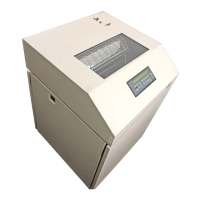
